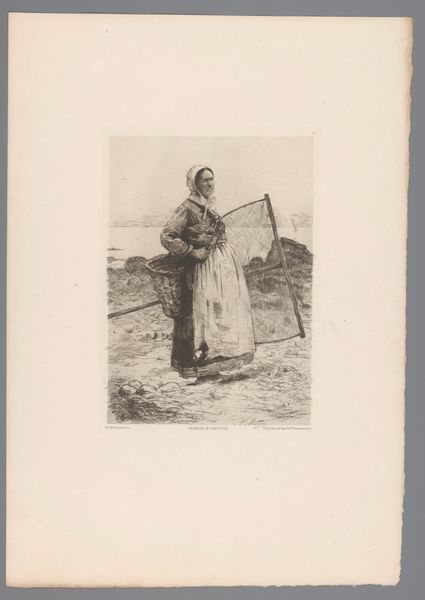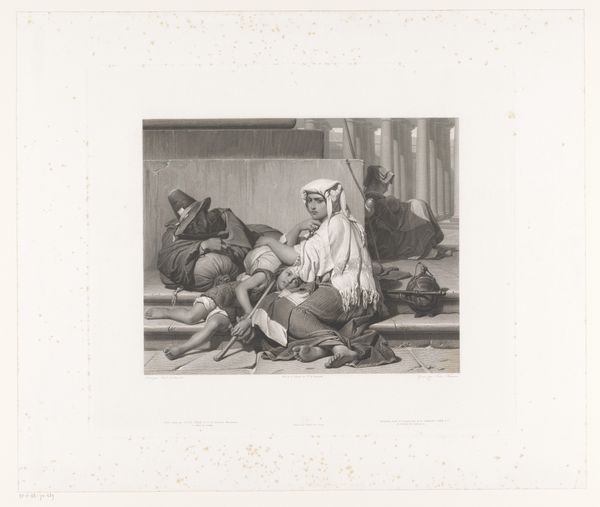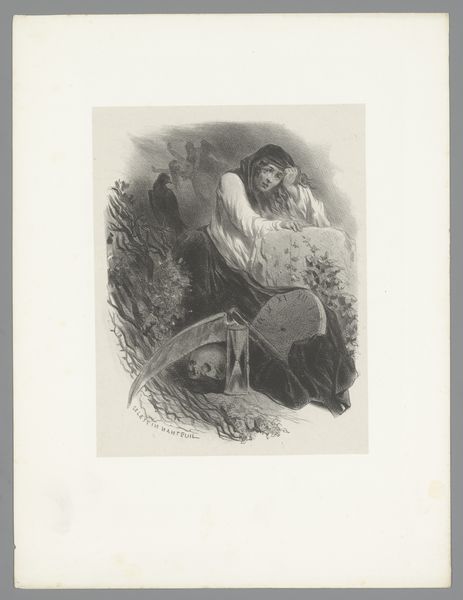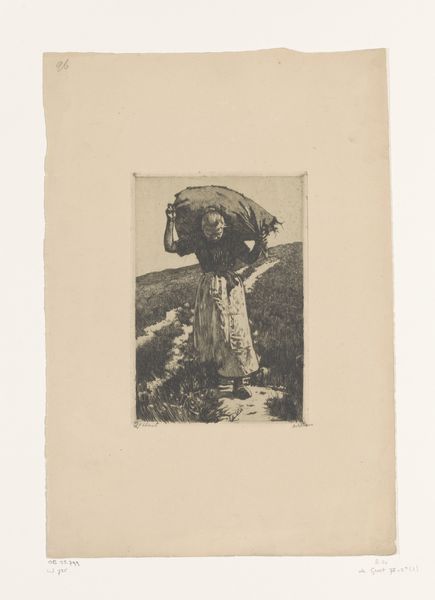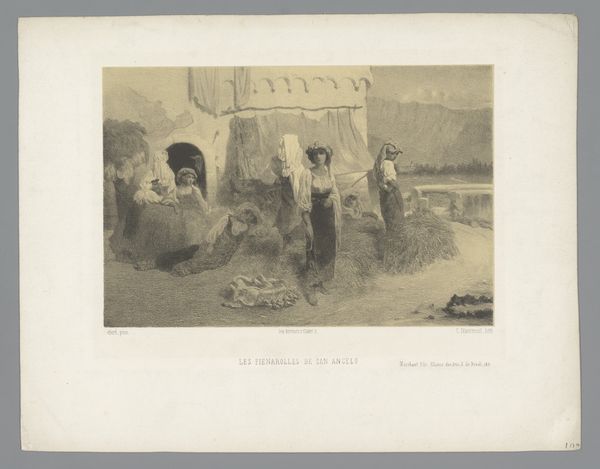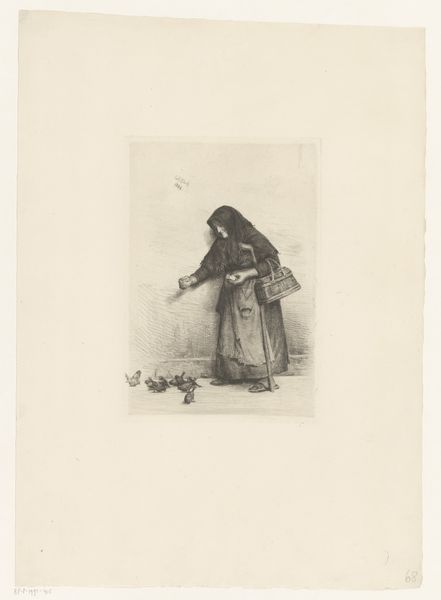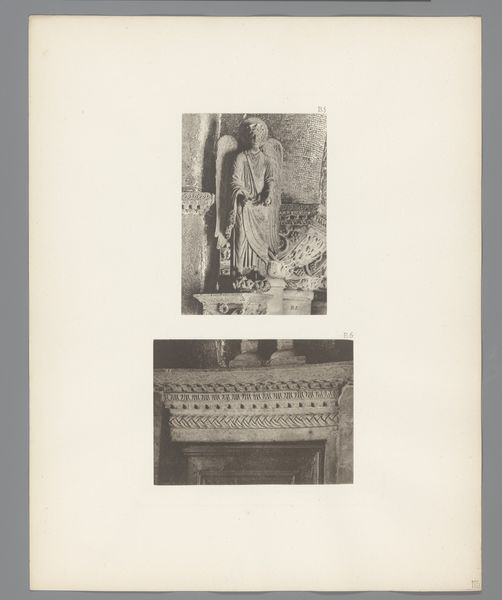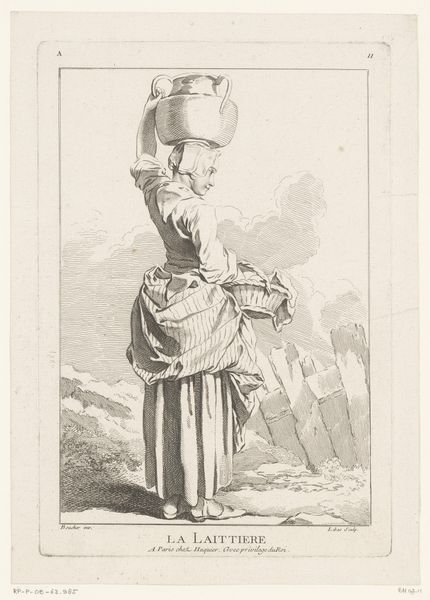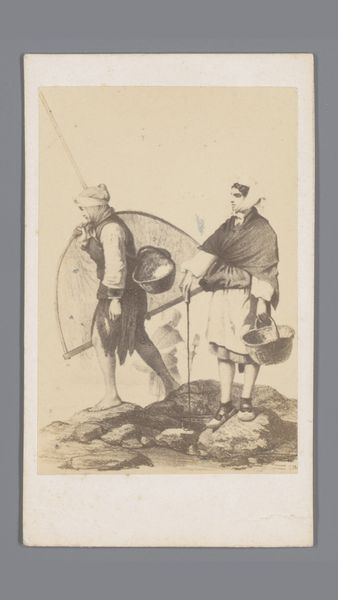
Vrouw met opvallende sieraden en hoofddoek aan de waterkant met waterkruik op haar hoofd 1830 - 1881
0:00
0:00
engraving
#
portrait
#
landscape
#
orientalism
#
genre-painting
#
engraving
Dimensions: height 447 mm, width 316 mm
Copyright: Rijks Museum: Open Domain
Curator: Adolphe Mouilleron’s engraving, “Vrouw met opvallende sieraden en hoofddoek aan de waterkant met waterkruik op haar hoofd” – or, “Woman with striking jewelry and headscarf on the waterfront with water jug on her head” – offers us a glimpse into 19th-century Orientalist visions. It’s estimated to have been created between 1830 and 1881, and resides here at the Rijksmuseum. Editor: It’s striking. The detail given to her jewelry compared to the somewhat bland landscape feels… charged. The woman emanates this serene stillness, yet her elaborate adornment hints at a story I want to unpack. Curator: The Orientalist style often romanticized and, some argue, exoticized the Near East and North Africa. Consider how the jug itself becomes symbolic – a common object transformed into something almost mythical through artistic interpretation. She is portrayed in elaborate detail, as if pulled directly from some European colonial fantasy, the focus on costume acting as a visual shorthand to denote "otherness". Editor: Exactly! What narrative is constructed by prioritizing the "exotic" over the mundane realities of the woman's labor, her daily trek for water? Also, that head covering might also carry distinct significance about where she may have been from in North Africa, what religious community, or which social order… The European gaze often obscures the nuances and diversity. The jewelry itself – is it an indication of status, an idealization of beauty, or another tool of "othering?" Curator: Symbols often hold multiple meanings layered across time and culture, which makes interpreting art from past eras a unique challenge. In terms of symbolic value, Water signifies both life and purification. So here, the jug itself has immense potential power. And also think about her adornments... It speaks of culture, region, personal aesthetic perhaps; we must attempt to tread carefully when judging historical portrayals by modern sensitivities. Editor: Perhaps. But our modern sensitivity allows us to examine the broader cultural impact—to challenge romanticized representations and the perpetuation of power dynamics between the colonizer and colonized. To question these visuals is an active attempt at disrupting the historic imbalances still shaping modern narratives. Curator: It appears it still triggers some cultural reflection in us. This engraving serves as an enduring window, revealing aspects not only about its subject, but moreover, reflecting who we once were, and perhaps what we have since evolved to become. Editor: Ultimately, reflecting on whose gaze this image caters to—whose understanding it seeks to cultivate—reveals uncomfortable truths about its original intent. It's up to us to use that understanding to see more clearly and promote a future with more inclusive visual stories.
Comments
No comments
Be the first to comment and join the conversation on the ultimate creative platform.
